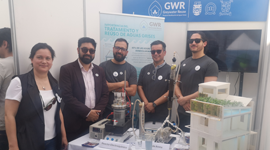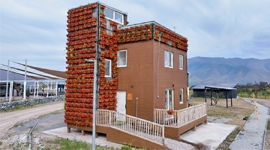You are here
"Greywater is a water source that many countries are missing out on."

Drawing on his experience of over two decades in wastewater research, Professor Al-Gheethi shared his vision on grey water reuse. He argued that it is a water source that many countries are losing, and that its use represents a significant opportunity in the context of climate change.
Countries that do use it and have regulations governing its treatment and reuse include Australia, Israel, Singapore, the United States, Germany, Spain and the United Arab Emirates. According to Al-Gheethi, it is mainly used for toilet flushing, garden or agricultural irrigation, laundry, and industrial processes.
According to the expert, the United States generates the most grey water per capita, while Australia manages it best with strict regulations and advanced technologies for treatment and reuse. The expert explained that Australia "has strict regulations that prevent anyone from discharging untreated grey water into the environment, and that its reuse is highly regulated. This has led to the development of advanced and innovative treatment methods".
He also highlighted Singapore as a leader in reverse osmosis, producing high-quality water, although its reuse is mainly for industrial and non-potable urban purposes.
Greywater ranking
Domestic greywater is water that does not come from the toilet, meaning it does not contain faecal matter. According to figures provided by Dr. Al-Gheethi, it includes water used for washing clothes (33% of average water consumption), showering (23%), cooking and washing dishes (11%), brushing teeth (5%), shaving (5%), and washing hands (3%).
He also presented data on grey water generation in different countries. The United States led the way with 281 litres per person per day, which is more than double the amount generated in European countries such as England, where it is 112 litres per person. He added that Oman is a striking case given that it is a Middle Eastern country where water resources are scarce, yet it has a high grey water discharge of 184 litres per person because it compensates for the deficit with desalination plants.
He also explained that the composition and characteristics of grey water can vary depending on factors such as "the number of people in a household and whether there are children. If a household has two or three adults, grey water will require simple treatment and can be used for irrigation. However, if there are more inhabitants, more advanced technologies will be required".
Currently, so-called 'emerging contaminants' are a focus of concern in research into grey water treatment, particularly in more developed countries. In this regard, he pointed out that "pharmaceutical and personal care products enter both grey and black water and are more difficult to recover and eliminate.' With regard to microplastics, he said that they are still at the laboratory stage, focusing on detection rather than treatment".
News
 GWR project at the Environmental Fair
GWR project at the Environmental Fair
 GWR researcher participates in major science conference in Portugal
GWR researcher participates in major science conference in Portugal
 The GWR Project has achieved the technological integration of gray...
The GWR Project has achieved the technological integration of gray...

